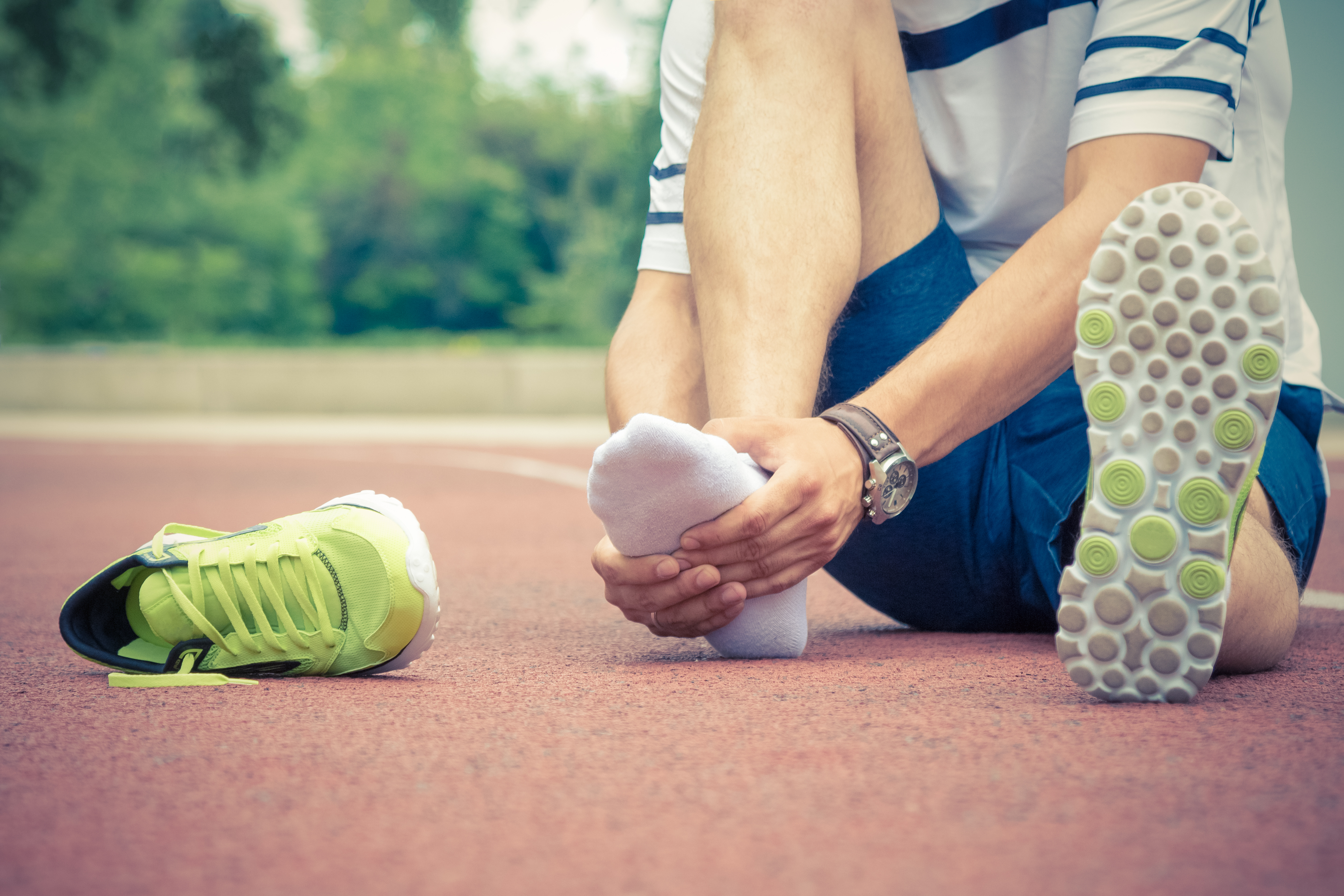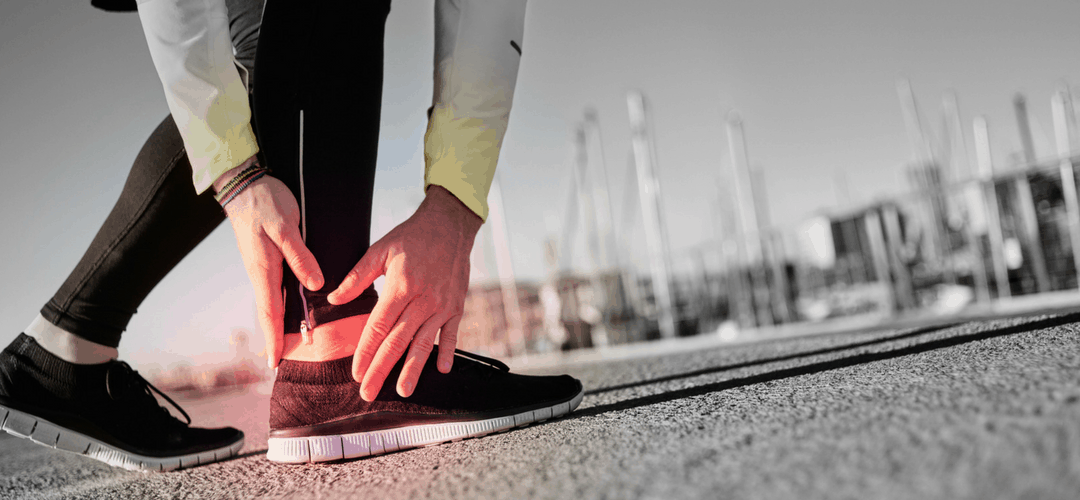On the surface it doesn’t seem like growing apples and cherries has much to do with running injuries and hypothetically it doesn’t. However, just like there are a host of ailments common to runners, there are also a host of problems associated with growing fruit. In our orchards, weather and pests are our biggest ailments but each can be managed with the proper tools and knowledge. Just like Laura, our running ambassador from This Runner’s Recipes shares some of her tips to manage and prevent the top offenders for runners.
Lace Up Tips from Laura
Whether you just started running or are a seasoned marathoner, you inevitably will get some aches and pains from running. Muscle soreness is part of improving as a runner, but sometimes the pain is more than just fatigued muscles. Pain that lingers for several days or weeks indicates a running related injury. If left untreated, running injuries can prevent you from running and make daily life uncomfortable. But don’t despair – running injuries can be treated and even prevented!
The following are some of the most common running injuries, from runner’s knee to shin splints.
Runner’s Knee
Formally known as patellofemoral pain syndrome, runner’s knee is characterized by pain and/or inflammation underneath the patella (kneecap).
The root causes for runner’s knee are often biomechanical irregularities, including weak and imbalanced glute and hip muscles and overpronation of the feet. Working with a physical therapist to strengthen the glutes and hips will help reduce runner’s knee. You may also find relief from changing your shoes, so consider having a gait analysis done at your local running store.

Stress Fractures
As the name implies, a stress fracture is a fracture to the bone as a result of cumulative overstressing. Most stress fractures occur in the shins, feet, and heels, although they can occur in the femur (upper leg) and hips as well. The causes of stress fractures include low bone density and an inappropriately high training load. Eating a diet rich in calcium, supplementing vitamin D if you aren’t regularly exposed to sunshine, and progressing your training at an appropriate pace will reduce your risk of a stress fracture.
If you are a woman and you stopped menstruating, you may be at a higher risk of stress fractures. Loss of your period (amenorrhea) means low estrogen levels. Estrogen contributes to bone density, so women with low estrogen levels may have low bone density, as well and be at risk for stress fractures. Talk to your doctor about amenorrhea to determine the appropriate treatment.
The telltale symptoms of a stress fracture are pain that gets worse throughout a run, being able to find a spot of intense pain, and failing the hop test. The hop test is simple: hop on the injured leg (don’t do this if you suspect a hip or sacral stress fracture). If you feel immediate pain, you should set up an appointment with a doctor immediately.
An MRI or bone scan will allow your doctor to diagnosis a stress fracture. A stress fracture will require 6-8 weeks off of running in order to let the bone heal, although you can usually maintain your fitness through zero-impact cross-training such as swimming or aqua jogging.
IT Band Syndrome
Your iliotibial band spans along the outside of your thigh from your hip to your knee. Due to weak hips, overpronation, or improper training methods, irritation and inflammation can cause pain in the IT band. ITBS can be a lingering injury, so be cautious if you experience symptoms.
However, IT band syndrome can often be treated through physical therapy. IT band issues can often stem from weak hips and misfiring glutes, so strengthening those areas and improving your running form will lead to a reduction in pain.
Plantar Fasciitis
Plantar fasciitis is marked by pain caused by inflammation in the heel or arch of the foot. Plantar fasciitis is caused by a gradual collapse of the plantar fascia (the arch of the foot). The severity of the pain varies from runner to runner; you may find that it only hurts first thing in the morning or you may find that the pain is severe enough to stop you from running.
The treatment for plantar fasciitis varies based upon the severity and causes. Some runners find relief in regular massage and stretching of the calves, as tight calves can pull on the tendons connected to the plantar fascia. Using a massage ball or frozen water bottle to roll out the arch will help, as will icing the inflamed area on a daily or twice daily basis. For more severe cases, orthotics or cortisone shots will offer long-term relief.

Shin Splints
Shin splints are a common injury, particularly for new runners. The primary symptom is a generalized pain in the lower leg along either the outside or inside of the shin bone. The pain is most pronounced upon flexion of the foot. If you can pinpoint an exact spot of pain, then it’s not shin splints and likely is a stress fracture.
Certain external factors can cause shin splints, which means you can alleviate the pain by changing a certain aspect of your training. Common causes include worn shoes, wearing the wrong type of shoes, running on cambered roads, running frequently in the same direction on a track, or neglecting stretching. To treat shin splints, see if you need new footwear, try to run on even surfaces, ice the area, and stretch your Achilles tendon (for shin splints on the inside of the shin) or calves (for the outside of the shin).
These are only a few of the most common injuries. If you experience any sort of pain while on a run, do not keep running until the pain subsides. If the pain persists, consult a medical professional.
With any of these injuries, you want to receive an official diagnosis from a medical professional and check with a physical therapist for the proper treatments of each injury, including whether or not you need to rest from running. Often times, what hurts is not the actual site of the injury itself, but a biomechanical irregularity, poor form, inappropriate training practices, or other issue that is likely the cause of the injury, unless it was a traumatic injury such as a hamstring strain. The causes of one type of injury can differ from runner to runner, so you want to work closely with a medical professional or physical therapist to address the injury individually.
Disclaimer: While I am a certified running coach, I am not a medical professional. This is general advice. If you are injured, please consult a physical therapist or sports medicine doctor for individualized diagnosis and treatment.
Just like professionals including running coaches, doctors and physical therapists to name a few help us stay healthy and on-the-go and focused on our running goals, we have a team of farm managers and agronomists that also keep our orchards healthy to make sure we can produce the highest quality fruit for every season.
Keep on running and stay wholesome to the core.

